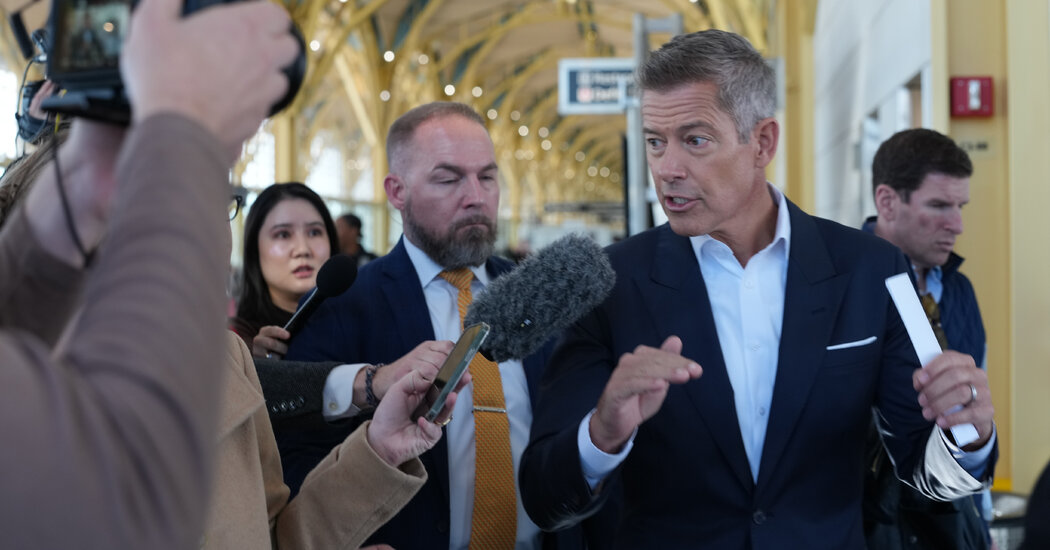Copyright The New York Times

At the end of October, Transportation Secretary Sean Duffy had measured words about the government shutdown’s impacts on air travel thus far. The system had weathered the funding impasse better than expected, he said, despite air traffic controllers working for weeks unpaid. Nevertheless, he warned there was the potential for “a disaster in aviation” in the near future. And within days, Mr. Duffy was taking action. He issued threats to shut down parts of the airspace and ordered a reduction of 10 percent of flights at 40 airports — a move that caught airlines, aviation experts and lawmakers by surprise. The aggressive action comes as Mr. Duffy solidifies his status as one of the most visible faces of the Trump administration through the shutdown, which began more than a month ago. He has made near-daily appearances in news conferences and television interviews to highlight the plight of controllers working unpaid amid the impasse, while hammering Democrats to make a deal. And as he has juggled his dual roles of chief transportation safety officer and administration messenger on the shutdown, he has drawn accolades from those who see them as prudent and skepticism from those who question his motives. Mr. Duffy has said his decision to reduce flight traffic resulted from the mounting challenge of keeping air traffic control facilities adequately staffed, combined with troubling F.A.A. assessments of how often planes were coming into dangerous proximity, as well as confidential filings from airline pilots. The Transportation Department has declined to publicly release the data, and neither the department nor the F.A.A. responded to requests by The New York Times to disclose it. Thank you for your patience while we verify access. If you are in Reader mode please exit and log into your Times account, or subscribe for all of The Times. Thank you for your patience while we verify access. Already a subscriber? Log in. Want all of The Times? Subscribe.



